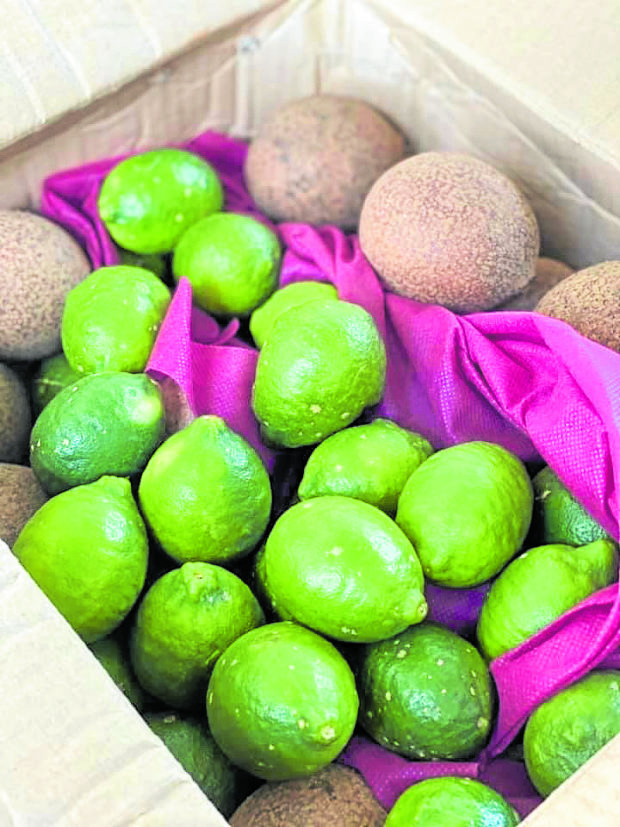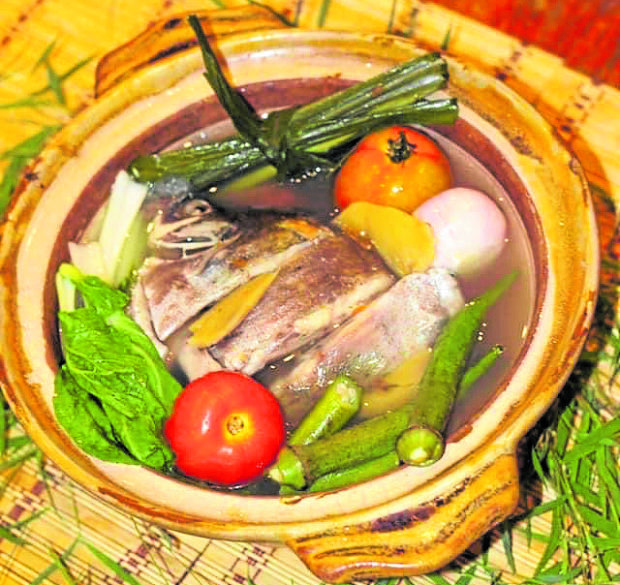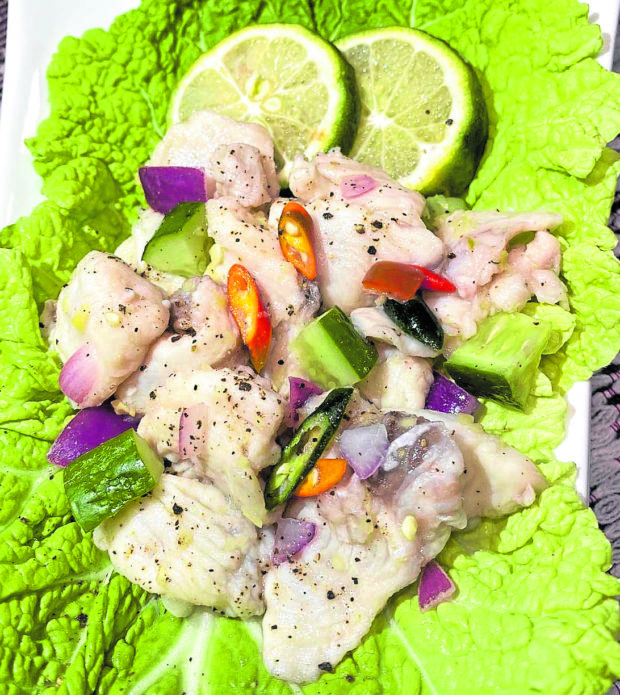
I was born in the serene and beautiful coastal town of Cantilan, Surigao del Sur, in northeastern Mindanao. Our family lived there until I was 7 years old.
We still go home to Cantilan every so often to visit our ancestral home and my parents’ fishpond. My childhood would have a profound influence on my food preferences and interest in cooking later in life.
Within our 14-hectare fishpond was a bamboo and nipa rest house on stilts above the water. My two older brothers and I used to peer through the slits of its bamboo flooring to watch the fish swimming below. We fished using hook and line and were so elated every time we caught bangus or tilapia.
With the help of our Lolo Indong, we also set up contraptions to catch crabs. We were overwhelmed with joy when we caught crabs but were also scared of being clipped by their big claws.
Lolo Indong’s specialty was kinilaw na bangus, while my Lola Andang’s were sinigang na hipon, halabos na hipon and sinugba or grilled bangus and tilapia. We partook of the sinugba while still hot from the charcoal grill and with oil dripping and oozing from the fish.
Our sawsawan was made of vinegar from tuba (coconut sap) with ginger, garlic and pepper. Lolo sometimes added balibayon, a kind of citrus fruit found on our farm, which gave a distinct aroma to his kinilaw na bangus, and tabon-tabon, a wild tropical fruit that’s also a known ingredient for kilawin.
These experiences sparked my interest in food. At an early age, I was exposed to the abundance of fish not only from our fishpond but also from the nearby sea. First-class fish was always available in the local market like tanigue, yellowfin tuna, blue marlin and lapu-lapu, as well as crustaceans and other seafood.
I still remember our favorite tinolang isda that we usually ate in a seaside restaurant in Barangay Hayanggabon every time we traveled to Surigao City. It was delicious and savory because the fish was freshly caught nearby and cooked with the right ingredients.
The recipe of the tinolang isda, which we also call tinuya, is quite simple. Ingredients include tomato, onion, lemongrass or tanglad, small amount of guinamos sauce (fish bagoong) and, if one wishes, one or two fresh chilies for maanghang-anghang flavor. Sometimes we add pechay leaves or other green leafy vegetables.

Life in Manila
We relocated to Manila because of my mother’s work at the Senate. We took residence on Zobel Street in Ermita, a stone’s throw from Adamson University, where I finished elementary, high school and college.
The streets outside our house were lined with small restaurants and carinderias catering to students and employees from nearby offices. I had playmates who were daughters of the carinderia owners, and sometimes we helped in preparing ingredients.
After college graduation, I found employment at the Court of Appeals where I worked for the next 15 years. During that time, I also got married to an engineer.
Seeing my passion and interest in cooking, my husband encouraged me to take up baking at Heny Sison’s in Cubao during weekends. There I learned how to bake cakes, cookies and pastries. Later, I took up a six-month course in culinary arts at the International School for Culinary Arts Hotel Management.
When my third child was born, I quit my job to devote more time to the children. With more free time, I found the opportunity to pursue my interest in food. I put up a coffee shop in our subdivision clubhouse and at the food concession in the School of the Holy Spirit in Quezon City, where my two older kids were studying. It allowed me to be always near my daughters, to accompany them to school every morning and back to our home after classes.
Years later, my husband and I decided to build our vacation house and future retirement home in his hometown, Agoo, La Union. By coincidence, a restaurant located in front of the house we built was offered to us.
We bought the restaurant, made a few renovations and renamed it La Sofia Grill and Restaurant, after our youngest daughter. Our acquisition marked my formal entry into the mainstream food industry.
La Sofia has been in operation for over six years now. We serve mostly Filipino and heirloom dishes, including kare-kare, pinakbet, buffalo wings, pulpog, sisig and “boodle fight.”
The food industry is among the worst hit by the pandemic, but I am grateful that we’re managing to keep our restaurant afloat, thanks to our guests who patronize the food we serve, whether for takeout, delivery or dine-in service, under prescribed health protocols.

Tinuya
500 g malaga fish
4 pc medium-sized tomatoes
1 pc medium-sized ginger
3 pc small onion
1 c malunggay leaves
5 pc pechay
5 pc okra
1 stalk lemongrass
1 tsp guinamos (fish sauce)
2 pc finger chilies
Boil 4 cups of water in a soup pot. Add the tomatoes, ginger, onions and lemongrass.
Add the fish followed by the malunggay leaves, pechay and okra.
Add the chili and guinamos to taste. Transfer to a serving bowl and serve warm.

Kinilaw na Tanigue (Fish Ceviche)
500 g boneless tanigue, cut into small cubes
2 pc red onion, chopped
4 pc finger chilies, cut into thin rounds
Juice of 15 pc calamansi
1 pc balibayon (lime)
1 pc tabon-tabon3 Tbsp vinegar
¼ c fresh coconut cream
½ tsp salt
½ tsp sugar
¼ tsp ground black pepper
6 pc chili pepper, cut into thin rounds
2 thumb-size fresh ginger, minced
1 pc bell pepper, diced
Arrange the fish cubes in a large bowl. Pour the calamansi juice over the fish and let it stand for 20 minutes. Scrape the pulp of the tabon-tabon into a bowl with vinegar, squash then strain and pour into a container.
In a separate bowl, mix the tabon-tabon mixture, sugar, salt, ground pepper, chili finger, ginger, bell pepper, chili pepper and coconut cream. Mix until well blended, then add the fish cubes. Best served when chilled. —CONTRIBUTED
The author is the owner of La Sofia Grill and Restaurant on Doña Toribia Aspiras Road (near the Grotto), Barangay San Antonio, Agoo, La Union.
Are you also a passionate home cook and want to be featured? Share with us your story and recipes, along with mouthwatering photos. Send them to [email protected].









































